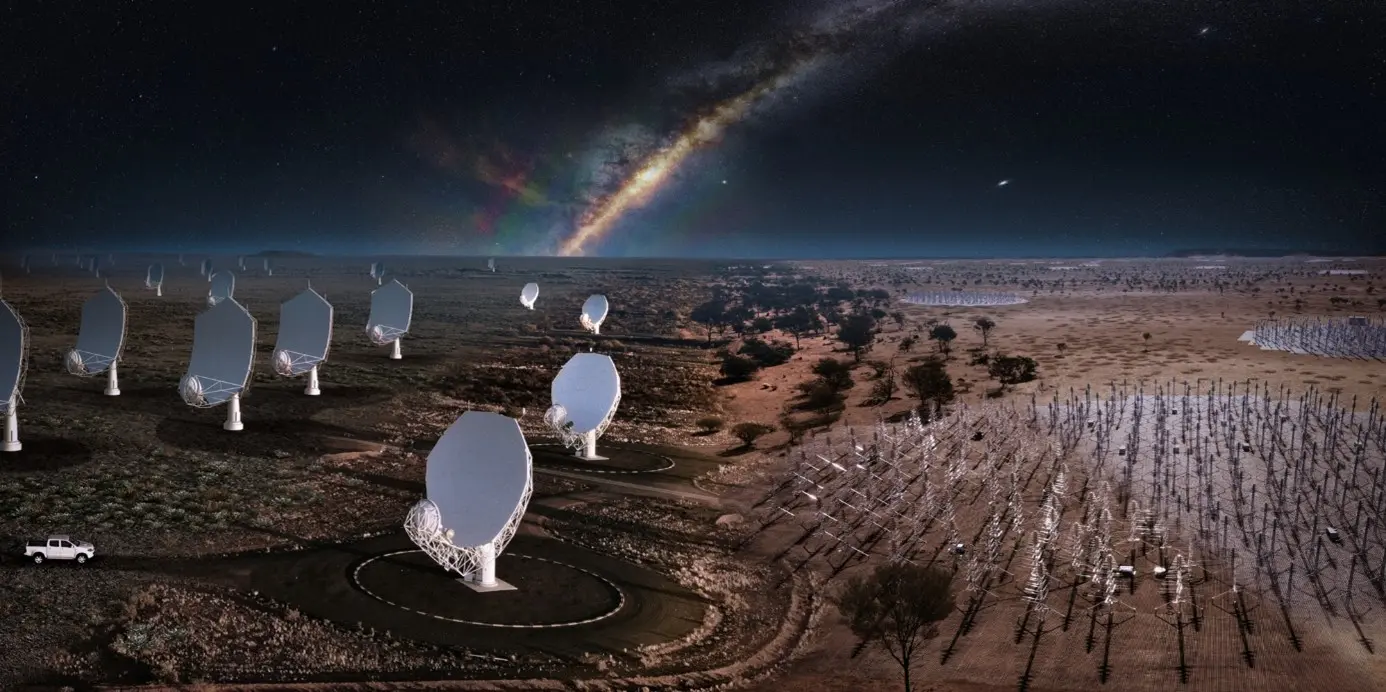ZHAW helps unravel some of the universe’s greatest mysteries with generative AI
Switzerland is part of the Square Kilometre Array Observatory (SKAO), an international organisation that is building two of the largest radio telescopes in the world. The Swiss consortium for the SKAO (SKACH), comprised of ten Swiss institutions, will host its yearly Spring Meeting at the ZHAW School of Engineering on 10-11 June 2024.

The SKAO is called the Square Kilometre Array Observatory because its two telescopes will eventually consist of hundreds of dishes in South Africa and thousands of antennas in Australia, spread over vast remote areas. The size and sensitivity of the telescopes will allow the SKAO to detect faint radio signals from billions of light years away and map the sky up to a hundred times faster than other state-of-the-art radio telescopes. This means that scientists will be able to observe and measure the universe in ways never before possible. With the SKA telescopes, scientists can gain insights into the early periods of the universe, the origins of the first stars and galaxies, the role of dark matter, cosmic magnetism, study Earth-like planets that are hundreds of thousands of light years away, and much more.
16 countries are involved in the SKAO’s efforts to develop and build the telescopes. The first antennas were installed in Western Australia in March 2024 while the components for the first three dishes are being delivered in South Africa, and the entire construction is expected to be completed in 2029. But even before the SKAO is functional and transmits data, there is a lot of work to be done. ZHAW researcher Elena Gavagnin, leading the project “Mock-observation via generative Deep Learning”, says: “The amount of data per second that will be generated is unprecedented. From an engineering point of view, one of the challenges is that this data needs to be processed to produce images.” Funded primarily by the State Secretariat for Education, Research and Innovation (SERI), Switzerland’s mission will contribute to providing data products for researchers so they can observe the universe.
The ZHAW is contributing its expertise in AI and machine learning to this international project. Since astrophysics cannot count on experiments to show how galaxies form, for example, scientists rely on simulations based on the laws of physics and implement astrophysical processes to study the observed phenomena and test hypotheses. However, the results of these simulations represent an idealised version of the astrophysical objects we have in the Universe. Telescopes provide observations far away from these “perfect” representations. Within SKACH, the Swiss Consortium coordinating the activities around SKA in Switzerland, Elena Gavagnin, (ZHAW Institute of Business Information Technology), Frank-Peter Schilling and Philipp Denzel (both with ZHAW’s Centre for AI) use generative deep learning techniques to study how the outcomes of ideal numerical simulations relate to more realistic observations and vice versa. Elena Gavagnin explains, “Using machine learning, we can compare this ideal simulation with what the SKAO instruments will observe in reality. When we get the real observation of a galaxy, we can learn what the perfect galaxy behind would look like and infer properties from it, for example the dark matter distribution. To do this, we have a huge catalogue of simulated gas - the matter we see - and dark matter maps - the component of a galaxy that we cannot see. Our model is trained to reproduce the gas map when we give it the dark matter map and vice versa. This is like predicting the colour of an image from many black and white images.” Frank-Peter Schilling adds, “We are using state-of-the-art diffusion models, which excel at image translation tasks, in fact the same type of model which we also use to process medical images, a nice synergy.” The ZHAW team is collaborating with the University of Zurich, which is in charge of providing the simulations, and the FHNW, which is developing a digital twin of the actual telescope. The meeting at the ZHAW School of Engineering in June will focus on updates from the consortium concerning instrumentation, computing infrastructure, data science and simulations, science and outreach.